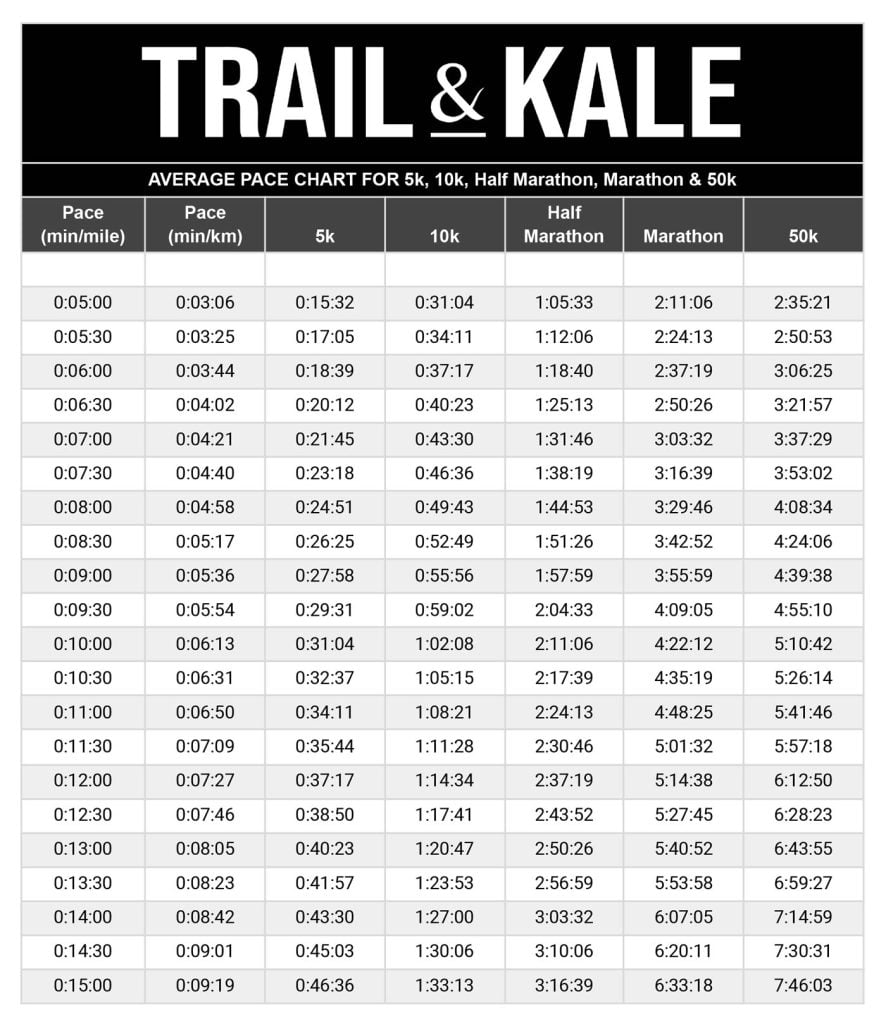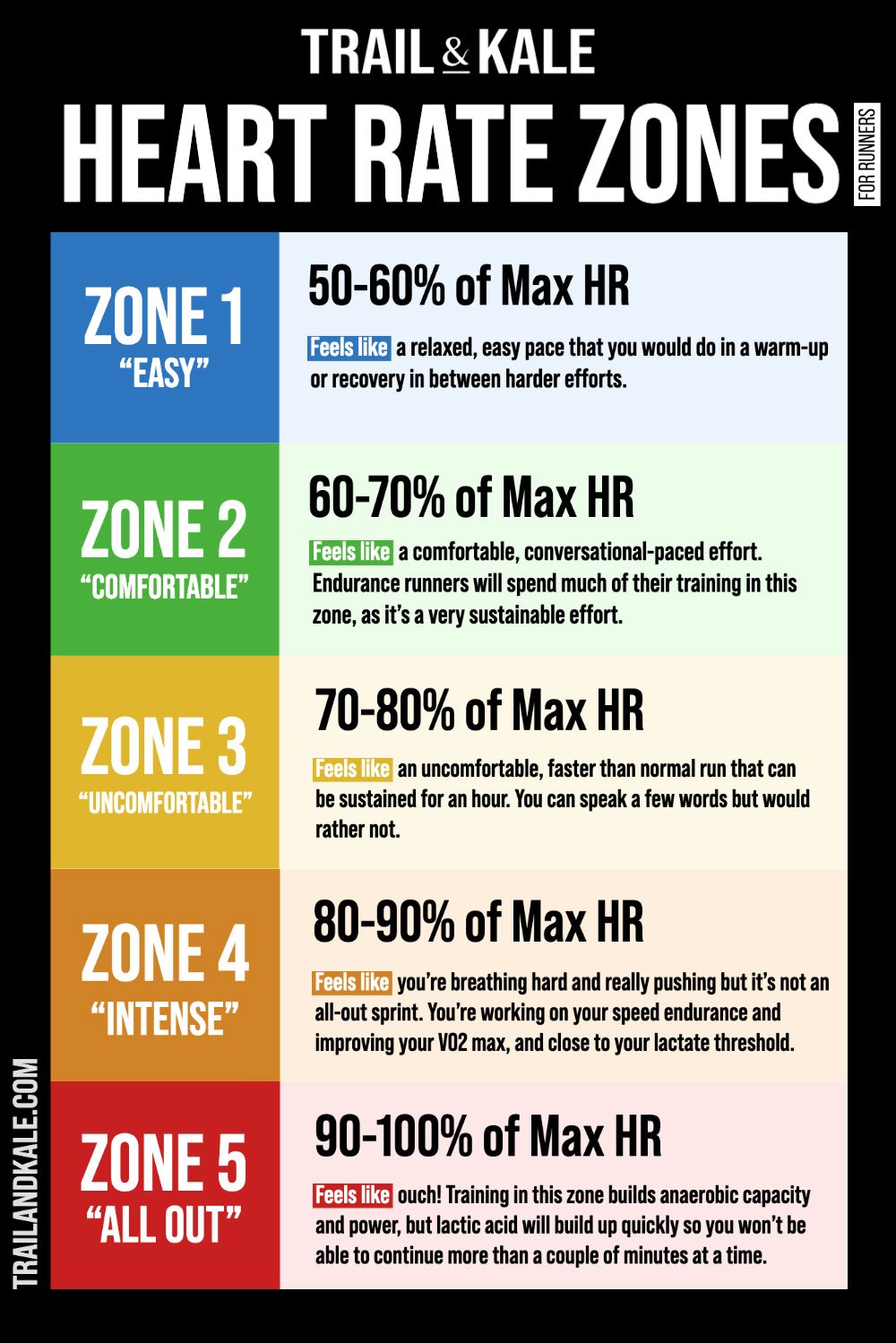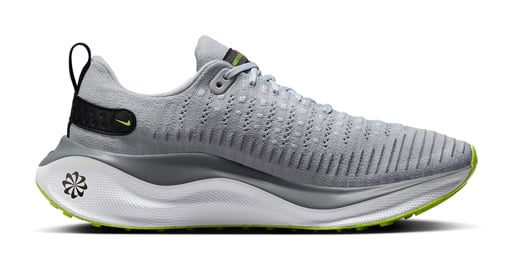It’s like they say, there’s NOTHING quite like running a marathon to prove you can achieve BIG things! This is for good reason – completing a marathon can be an incredible accomplishment and a testament to your physical and mental endurance, you even get a medal to prove it.
I’m Alastair, one of the founders of Trail & Kale; I ran my first marathon over 10 years ago and have since gone on to run many marathons and ultramarathons all over the world.
I signed up for my next marathon about 1 hour after crossing the finish line for the first time.
This marathon running passion grew into a love for ultra-endurance events, and I’m so excited to share all the valuable information I have learned over the years, including the marathon training plans and strategies that I developed.
This particular 16-week training plan has worked wonders for me in the past, and I know it will get you to your marathon start, and finish line, like a boss.
Now that I have a solid base mileage in my weekly running schedule, I go straight for my 12-week marathon training plan if I want to fast-track my training for marathon success. Maybe that will be you for your next marathon!
See all our marathon training plans here to make sure you’re doing the best one for your current fitness level.
I’m excited to share this exclusive 16-week marathon training plan with you! This marathon training plan is designed for runners who have never run a marathon before, with a gradual buildup of mileage and intensity to prepare you for your first marathon race day!
We’ve taken extra care to make this plan as easy to follow and structured as possible, to get you to race day and over that finish line with a smile on your face and a huge sense of pride and accomplishment!
This post is in partnership with Nike. If you’re looking for a supportive running shoe with enough cushioning and response to help you complete your half or full marathon training; the Nike InfinityRN 4 could be the perfect choice for you. Read my in-depth Nike InfinityRN 4 review to learn more.
What’s in this 16-week marathon training plan
- Who this 16 week marathon training plan is for
- Overview of our 16-week beginner’s marathon training plan
- How to prepare for your marathon
- Advice to optimize performance, improve post-run recovery and prevent injuries
- Tips for race day success
- Our FREE downloadable 16 week training plan pdf (printable)
- COMPANION GUIDE for this 16-week training plan
With this guide, you’ll have all the tools you need to start your marathon journey and achieve your goal of crossing the finish line.

Who this 16 week marathon training plan is for
If you run regularly, but have never run further than a 10k or half marathon before, then this 16 week beginner’s marathon training plan is a great choice for you!
If you’ve run marathons before and like the 16 week marathon training schedule – 16 weeks (or 4 months) is a great length to gradually and steadily build up your strength and endurance to run the marathon distance, whether you’re a beginner marathon runner or have run marathons in the past and like taking the time to build up your endurance over 4, rather than 3 months.
If you have not run for a while, or are active and don’t currently do much running, then our 20-week marathon training plan may be a better program to choose. It provides you with those extra 4 weeks to build up to running a marathon, which can help avoid over-training and lower risk of injuries through running too far, too soon in your training journey.
If you’re a more experienced runner and none of these situations sound like where you’re at in your run training then head back over to our marathon training plan database and choose one of our other plans that fits your experience level and goals, from beginner through to expert!
For example, we have a great 12-week marathon training plan that will get you race-ready in 3 months, if you don’t need too long to prepare!
If you’re interested in running 5k, 10k, a half marathon or even your first ultramarathon then head over to our training plans homepage after reading this post.
Overview of our 16-week beginner’s marathon training plan
This training plan is designed to help you train to be able to run a marathon distance. It assumes that you have no specific time goal, and the target is to cross the finish line happy and injury-free!
Of course, if you’d like to set a time goal for yourself then by all means, do it! It can really help to focus your training to have an approximate time in mind.

To get an idea of your predicted finish time for running a marathon and the pace ranges involved, refer to our marathon training plans overview, which includes more pace charts (like the one above) and also interesting data on average finish times for both male and female runners.
How the plan is structured
This is a 16-week marathon training plan: the ultimate marathon training program for beginner and intermediate runners!
As with our other marathon training schedules, the plan is structured so that you do several runs a week, of different durations and intensities. In this 16-week schedule, you’ll do 4 runs a week.
At the end of each week your training plan will include a ‘long run’. The long run is important because gradually increasing the duration and distance of your runs each week will help train both your body and mind to be able to run a full marathon.
This approach will also help build your strength and confidence over time.
The longest training run you’ll do in this marathon training schedule is 20 miles. This will be the longest run before you reduce your mileage to taper down in preparation for your 26.2 mile race day!
This beginner’s marathon training schedule also includes rest days and core strength training. These are also important components for your overall strength and recovery.
Heart rate zone training
Our marathon training plans utilize heart rate zone training to plan, monitor, and track running effort levels and performance over time.
This approach takes advantage of the benefits of personalized heart rate training, which provides individualized heart rate ranges or ‘zones’ for you to train within.
Read our super helpful guide to heart rate zone training to learn how to work out your heart rate zones and how to track your heart rate when you’re running.
How to prepare for your first marathon
1. Check your fitness level
Be honest with yourself about your current fitness level.
If you feel you could benefit from spending a few more weeks building back up to running at least 30 minutes at a time, non stop, then it is worth investing the extra 8 weeks in gradually building yourself up to running 30 minutes non-stop, using our Couch to 5k program, before starting this marathon training plan for beginners.
2. Gather the gear you need to run comfortably
Given you already run regularly, you probably have some (or all) of these already, but it helps to check your closet against the list to make sure you have everything you need:
- A quality pair of running shoes
- Running socks
- Running tights or shorts
- For women, a running-appropriate sports bra
- A running tee or vest
- A running watch with a wrist-worn heart rate monitor
- A waterproof running jacket
- Running sunglasses
- A technical running hat for warm weather running
Optional items for cold weather running are warm running gloves, an insulated winter running hat, and a warm baselayer such as a merino wool tee.
If you’re looking for a supportive running shoe with enough cushioning and response to help you complete your half or full marathon training; the Nike InfinityRN 4 could be the perfect choice for you!
Read my in-depth Nike InfinityRN 4 review to learn more.
If you expect to do any running in the dark then you’ll also need a good running headlamp, and a reflective running vest is a good idea, to help you be seen in the dark and low light conditions.
Find time in your schedule to fit training in
It’s important to remember that dedicated, consistent training is what will get you to the marathon finish line. Put the work in, follow our plan, and you WILL succeed – “labor omnia vincit”, “work conquers all”!
Take the time to review our free training plan below, together with your personal schedule, to work out the best days and times during the week when you’ll be able to fit your training in over the next 16 weeks.
Running in the early morning can be a good way to fit your miles in and get the training run done before everything else you have to do in the day. If you need some tips and motivation to help get you up and running so early in the day, read our guide to becoming a morning runner.
Running at night is also a popular choice if you have a safe place to do your run training. Make sure you wear enough warm clothes, reflective gear and a headlamp to keep you comfortable and help ensure you can be seen (and see where you’re going!).
Lunchtime is another good time for getting a 20-40 minute run training or core strength session done.
Make healthy lifestyle changes
Training for a marathon is not just about running!
Taking other steps to develop a healthier lifestyle can also help make your marathon training easier and more enjoyable.
Some lifestyle changes that will be beneficial include:
- changing your diet to eating more whole foods and less processed foods, salt, and sugar
- reducing your alcohol intake
- creating a good environment for sleep and ensuring you get enough of it!
Making lifestyle changes such as these can help boost your energy levels (important for this type of endurance training), make you feel generally better about yourself, and can help achieve weight loss goals if that is something you’re also aiming for.
Advice to optimize performance, improve post-run recovery and prevent injuries
Following these tips before, during, and after your training sessions will enable you to get the most out of every run.
Before your run: Readiness, fuel, and dynamic stretching
Be prepared – gather your running shoes, watch, water and gear together before you plan to run – especially if you’ll be heading out early the next morning!
Eat before your run – it’s especially important to eat before your weekly long runs to ensure you have high enough energy levels to fuel you while you run for extended periods.
Follow these additional strategies to be able to run longer without getting tired.
Dynamic stretching – stretching is important to do as part of your 5-10 minute pre-run warm up. Check out our video demonstration of recommended pre-run dynamic stretches in our post on stretches for runners.
During your run: Technique, heart rate monitoring, and nutrition
Develop good running technique – good technique includes ensuring you’re always thinking about having efficient breathing, running form and cadence as you run.
Monitor your heart rate – Heart rate training is a key component of our marathon training programs. By personalizing your training based on your individual heart rate data, you can ensure that you’re running at the appropriate intensity for each session.
As such, our programs are most effective for those who are able to track and monitor their heart rate.
Nutrition during your run – Take water with you for every run, except, perhaps, those shorter runs in cold weather. It’s easiest to carry water in a running belt or hydration pack if you want to go hands-free, otherwise take a bottle with you.
Energy gels and chews are a convenient choice for fuelling on the go, and are helpful for runs over 60-90 minutes in duration.
After your run: Static stretching, recovery, and injury prevention
Static stretching – always take the time to do some static stretching after you finish each run, to help maintain flexibility and reduce post-run soreness. These are our favorite static stretches.
Post-run protein recovery shake – incorporating a high-quality plant-based protein shake into your post-workout routine can significantly alleviate post-run soreness and facilitate your body’s recovery after strenuous endurance or strength training.
To optimize your recovery, I recommend consuming a protein shake after any run lasting over an hour.
Get plenty of rest and sleep – to recover as quickly as possible, make sure you’re getting enough rest on your rest days, as well as overnight. Our guide on how to sleep better is full of tips that should help!
Tips for race day success
Here are our top tips for marathon race day success! Bookmark this post and come back to it as you approach race day:
A few days before
- Eat and drink particularly clean – to prepare for the race day, prioritize consuming clean food and staying hydrated by drinking plenty of water.
- Coordinate with your friends and family who will be spectating to determine their location along the course. Decide on a specific mile marker or landmark and clarify which side of the barriers they’ll be on. They might even create a humorous or motivational sign to encourage you!
- Plan your post-race celebration in advance. Consider booking a nearby bar or restaurant and making a reservation if needed.
The night before
- Prepare your gear. Get your gear ready by collecting your running essentials, such as your shoes, clothing, accessories, water bottle, nutrition, race bib, and safety pins. Don’t forget to ensure that your running watch is fully charged before the race.
- Prepare your drop bag. If you plan to use a drop bag during the race, pack it with any necessary items such as your phone, a warm layer, a snack, and a change of shirt. Place the drop bag by your running shoes the night before the race to avoid forgetting it and have it readily available to grab and go in the morning.
- Set your alarm
- Prepare your breakfast
- Check the weather forecast
- Plan your route and timing to get to the start line. Know how long it should take to get there and allow plenty of time for parking and walking to the start area, including time to use the restroom and drop off your drop-bag.
- Know your start time and what group or wave you’re running in
- Have an early evening meal and get an early night!
Race day morning
- Eat a good breakfast around 2 hours before your race starts. My post, what to eat before running details the foods I recommend for energy-filled pre-race meals.
- Leave for the start line with plenty of time to allow for parking, dropping your drop-bag, walking to the starting corrals, and finding a porta-potty to use the bathroom. Keep in mind that thousands of other runners will also be present, so be prepared for long queues for parking and restroom use, which can add significant time to your schedule.
Running your first marathon
- Stay calm at the start. With so many other runners around you, it can be pretty intense, but take a deep breath and focus on keeping your heart rate calm and soaking up the fun atmosphere! Remember all the sacrifices and hard work in training you’ve made to get to that start line, and don’t forget to enjoy yourself!
- Smile as much as possible. I mean it! You probably won’t have a choice, given how wonderful the atmosphere is when the route is lined with people who came out to cheer you on. Be sure to smile at those photographers – you’ll want a souvenir photo, after all 🙂
- Stop your watch! If you’re wearing a running watch, remember to stop it when you’ve crossed the line so you have your race time saved.
Our FREE downloadable 16-Week Marathon Training Plan pdf (printable)
COMPANION GUIDE for our 16-week marathon training schedule for beginners
Our 16-week training plan is designed to be simple to follow and prioritizes running consistency and the importance of your weekend long run to train yourself physically to be able to run the full marathon distance, as well as develop the mental stamina to go the distance.
This companion guide is designed to be a reference to your 16 week training plan below, we developed it to ensure you’re on track for success, rather than mindlessly following when to run, how long for, and how intense that run should be.
We believe in teaching you the foundations of running technique, and sharing our top tips for nutrition and running gear to help you get the most out of your training runs, and race day!
It also includes a milestone for the first half marathon distance you run, which is 7 weeks into your 16 week plan. If you’d like to, it could be a good idea to find a local half marathon race to sign up for that weekend, rather than doing it as another regular long run near home – spruce things up!
A half marathon race should be a fun day out, as well as a good opportunity to get some experience of what to expect from running with thousands of other runners on marathon race day!
Train using heart rate zones
Effort levels for each run are specified based on ensuring you’re running in target heart rate zones 2 and 3, which you’ll monitor using a running watch that tracks your heart rate.

Read our heart rate training post to learn how to calculate your personalized heart rate zones.
You can also use this training plan without specifically using heart rate zones and tracking your heart rate, but you’ll need to gauge your effort level based on your perceived effort, rather than using heart rate data.
Most of the runs in this marathon training schedule are run at Zone 2, or ‘comfortable, conversational pace’. Your shorter Wednesday run is a more intense, Zone 3 run.
Aside from that, this beginner marathon training schedule doesn’t feature any intense runs such as interval training or tempo runs, but if you’re a more experienced runner and want to change modify it to more of an intermediate marathon training plan, you could throw these into the mix on your Wednesday run sessions!
Warm up and cool down
Before every run, spend at least 5 minutes doing a warm up, which should include dynamic stretching.
After every run, spend 5 minutes cooling down until your heart rate is back comfortably in Zone 1. Then spend at least another 5 minutes doing some static stretches to help reduce soreness and promote flexibility and range of motion.
Our guide to stretches for runners lists our favorite dynamic and static stretches.
Core and strength exercises
Thursday is your training plan’s ‘core and strength’ day.
This session should be around 30-45 minutes long, and focus on core stability and overall strength training, which you can do using your bodyweight and little or no additional weights or gear.
I suggest doing circuits of the following exercises into your core and strength sessions for an all-round core and strength session.
Do around 90 seconds on each, and repeat the circuit three times:
- Bodyweight squats
- Lunges
- Bird-dog
- Bicycle abs
- Fire hydrants
- Planks
- Side planks
- Glute bridges
Rest days
Monday and Saturday are your rest days.
This doesn’t mean you shouldn’t do some activity, though, but take those days off from running.
Depending on how you feel, you could do some yoga, breathwork, stretching or light cardio cross-training such as riding an indoor bicycle or taking a hike.
Happy training!
I’m excited for you to embark on your first marathon training journey and hope you find this 16-week marathon training program to be an easy-to-follow and enjoyable companion along the way!
Pin this post!













